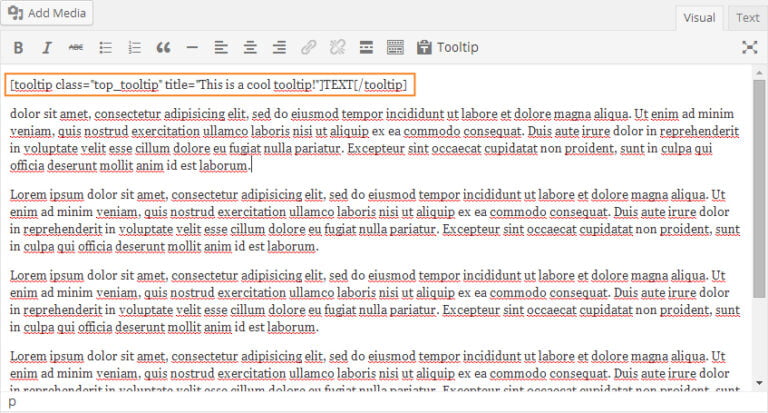We’ve started making a tradition of rounding up the latest front-end research at the end of each year. We did it in 2020 and again in 2021. Reports are released throughout the year by a bunch of different companies and organizations researching everything from web design trends to developer skills to popular coding languages and so many other things.
Last year, it seemed the overarching trend was around remote work and its impact on developer productivity and workplace environments. We also saw TailwindCSS continue to explode in usage, dismal accessibility on the top 1 million websites, and a massive growth in API usage, among other findings.
So, what’s in store for this year? Read on to find out.
Table of contents
Table of Contents
- 1 Table of contents
- 2 HTTP Archive Annual State of the Web
- 3 The WebAIM Million 2022
- 4 State of CSS 2022 Survey
- 5 Interop 2022 Dashboard
- 6 2022 State of Open Source
- 7 StackOverflow 2022 Developer Survey
- 8 GitHub’s 2022 State of the Octoverse
- 9 GitHub Copilot’s impact on developer productivity and happiness
- 10 The Software House State of Frontend 2022
- 11 Sparkbox 2022 Design Systems Survey
- 12 UXTools.co 2022 Design Tools Survey
- 13 2023 HackerRank Developer Skills Report
- 14 Tower Git Mac Dev Survey 2022
- 15 Developer Nation 2022 Q1 Pulse Report
- 16 Postman 2022 State of the API Report
- 17 CodeinWP WordPress Hosting Survey 2022
- 18 WordPress LMS Websites: A Data Study
- 19 UN E-Government Survey 2022
- 20 LinkedIn 2022 Workplace Learning Report
- 21 UpWork: The Great Work Teardown
- 22 UpWork 2022 Labor Market Trends and Insights
- 23 Reblaze 2022 State of Web Security Survey
- 24 Trend Micro 2022 Midyear Cybersecurity Report
- 25 1Password: The realities of parenting and growing up online
- 26 The Eclipse Foundation 2022 IoT & Edge Developer Survey
- 27 CampaignMonitor Ultimate Email Marketing Benchmarks for 2022
- 28 Wrapping up
HTTP Archive Annual State of the Web

What it is: A study that looks at 8.3 million websites sourced from the Chrome UX Report that analyzes how the sites were made, breaking things up into sections that include page content, user experience, content publishing, and content distribution. The CSS chapter is written by Rachel Andrew (so you know it’s good) and reviewed by folks that include Chris Lilley and CSS-Tricks contributor Jens Oliver Meiert.
What it found: The last two years has shows that CSS continues to contribute to overall page weight. This year was no exception, with CSS weight increasing 7% at the 90th percentile. That’s on par with past years.
What was the most popular class name in 2022? .active. But you also see a bunch of vendor-specific prefixes in the list, like .fa- for Font Awesome, and many for WordPress, such as .wp-, .has-large-font-size, and .has-pale-cyan-blue-background-color (phew!) which I guess is an indication of what the most popular background color is for WordPress sites.
The report also shows pixels as the most commonly used CSS unit for the font-size property. Maybe we’ll see that number trend down next year after Josh Collinsworth published why that’s not a great idea.
There’s so much more to read in here that goes beyond CSS and is worth checking out.
The WebAIM Million 2022
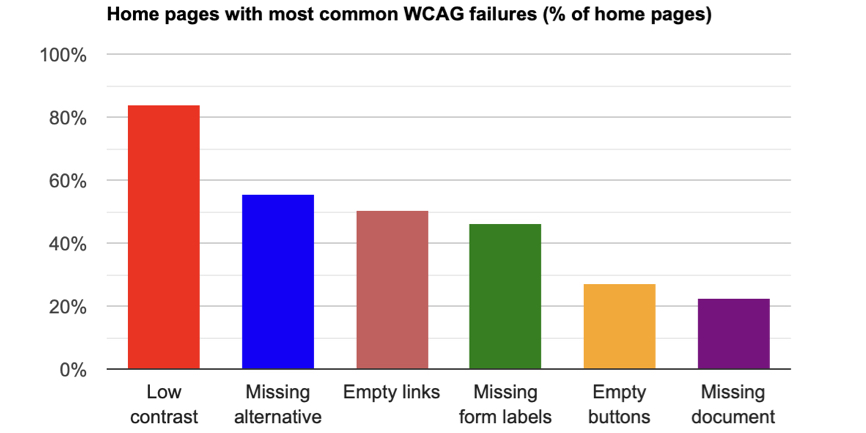
What it is: An evaluation of the accessibility of the top one million as evaulated by the WAVE stand-alone API. That group of sites consists of domains pulled from from the Majestic Millions list, the Alexa Top 1,000,000 web sites, and the DomCop top 10 million domains.
What it found: Well, hey, look at that! The number of distinct accessibility errors has decreased 1.1% since February 2021. That’s modest improvement, but we’re still looking at a grand total of 50,829,406 errors — or an average of 50.8 errors per site — and those are just the ones that could be detected! I think we’d all do well taking time to read Hidde de Vries’s post on how to fix the common accessibility issues outlined in the report.
State of CSS 2022 Survey

What it is: This survey pokes at CSS usage each year, surveying developers on the features they use, as well as their understanding of and satisfaction with them. Co-creator Sacha Greif openly wondered if there is too much CSS in a post he wrote right here on CSS-Tricks and a good part of that was based on the rising number of CSS features in recent years. This year’s survey garnered 8,714 responses from developers around the world.
What it found: Some really neat stuff this year. With all of the new CSS stuff that’s shipped in the past couple of years, there are still plenty of them that have yet to gain traction, whether it’s an awareness thing or the lack of browser support. For example, a whopping 46.7% of folks are only aware of 40% or less of the features covered in the survey. Container queries are a good example of a feature with awareness (58% have heard of it) but little use (12.6% have used it). The :has() selector is a glaring success with 54% knowing about it and 34.8% already using it.
There’s a lot more in here, like CSS-in-JS trends (interest is downward), accessibility features (needs more awareness), and which blogs y’all read (thanks for making CSS-Tricks #1!).
Oh, and don’t miss Lea Verou’s conclusion, which predicts that CSS nesting and color manipulation will rule in 2023. I agree. Nesting would be a game-changer that could put a dent in CSS preprocessor usage. And there are so many new color features today and in the works that are sure to impact the way we define and use colors. But I also suspect that @container becomes a much bigger deal as browser support catches on and we find ourselves writing more container queries where we may have reached for media queries in the past.
Interop 2022 Dashboard
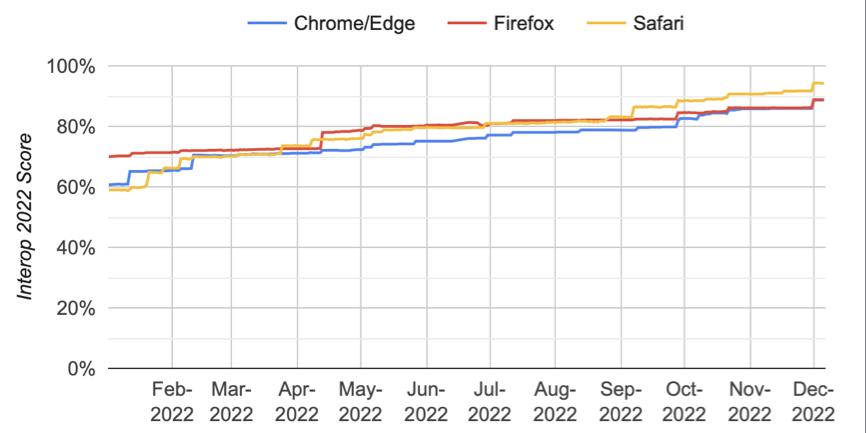
What it is: This is more of a live dashboard than a report. It analyzes data from a fixed point in time, displaying results from the web-platform-tests which are a group of test suites for many web platform specifications that run daily. The idea is that we can see which web features are broadly supported, which ones aren’t, and how browsers rank in terms of supporting them.
What it found: It’s less about what this dashboard has found than what it is currently showing. And right now, Safari is leading the pack as far as supporting what the focus areas are for 2022, which include newer features like Cascade Layers, Container Queries, the <dialog> element, Subgrid, and viewport units. Safari scores 89% in the tests, with Firefox right on its heels at 88% and Chrome/Edge not far behind at 84%.
If you look at the scores for the experimental versions of those browsers, Safari Technology Preview jumps way up to 94% while Firefox and Chrome/Edge sit at 88%. It’s really tough to make the whole “Safari is the new Internet Explorer” point these days, at least when it comes to these focus areas. There are other legitimate criticisms of it for way different reasons that are tied to iOS.
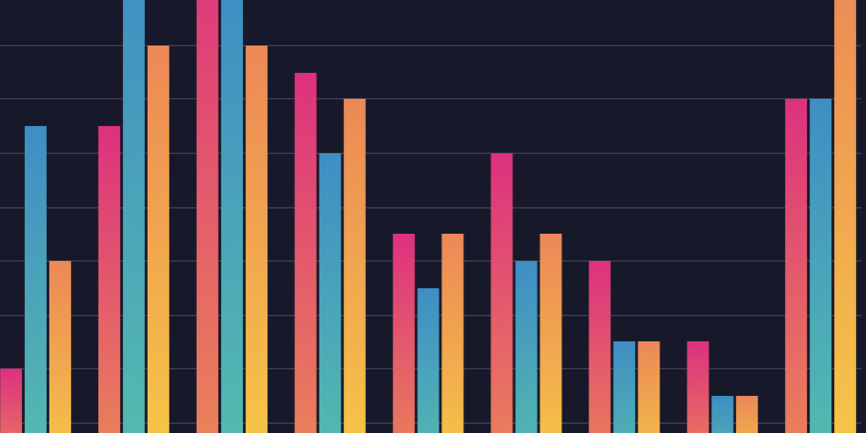
What it is: A survey of approximately 7,000 members of the Jamstack community that provides a snapshop of who Jamstack developers are and the sorts of things they’re working on.
What it found: This survey is interesting as heck because it offers a peek into things like job titles and employment on top of Jamstack-specific stuff. For example, four out of five developers are now working remote most of the time and half of those would quit their jobs if they had to return to the office.
Here’s another neat trend: In 2021, 32% of folks referred to themselves as “full-stack developers” in 2021 while 45% called themselves “front-end developers”. That practically swapped in 2022, with 44% of respondents calling themselves “full-stack” and 32% going with “front-end”.
You’ve gotta look at the full set of results to get even more insights on what Jamstack developers are building and how they are building those things. Like, WordPress is still the most widely-used CMS at 59% of respondents (22% of which is headless WordPress), but surprisingly, Notion is quickly gaining traction in the Jamstack CMS space, at 26%. I’ve been interested in Notion as a CMS ever since Chris wrote about it 2020.
2022 State of Open Source

What it is: A survey of 2,660 developers by the Open Source Initiative and OpenLogic that tracks the usage of open source projects and contributions to them. The survey was open for six weeks and attracted responses from 15 countries.
What it found: The Open Source Initiative published their 10 takeaways from the report. Among those? 79% say they sponsor open source organizations (which might be expected from this audience). Deeper in the report, jQuery (31%) is still ranked as the top technology for app development. React (27%) clocks in at second, and Angular (26%) comes in at third.
StackOverflow 2022 Developer Survey
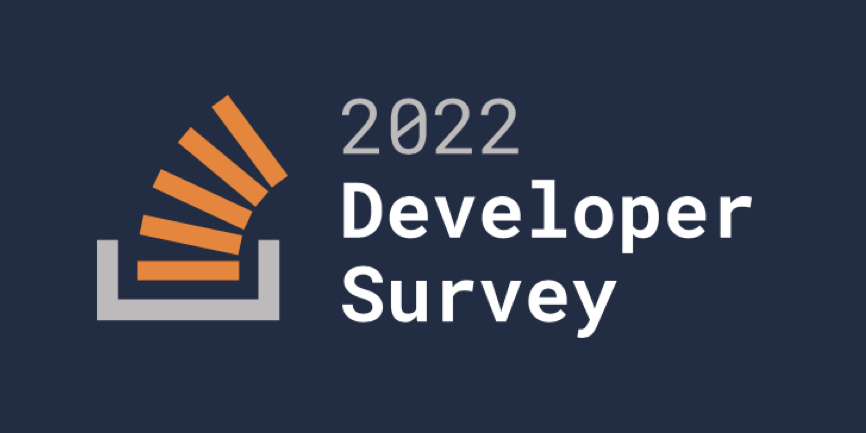
What it is: A survey of more than 70,000 developers to measure how they learn, which tools they’re using, and what they want in the future.
What it found: I love this survey because it always affirms the amount of time I spend looking things up. 87% of folks spend at least 30 minutes searching for answers to problems, 25% of which spend an hour or more. The survey found that a team of 50 developers spends between 333-651 hours of time looking up answers per week.
Otherwise, JavaScript is the most used language for the tenth year in a row (but Rust is the most loved) and VS Code is the overwhelmingly popular IDE at 74%.
GitHub’s 2022 State of the Octoverse
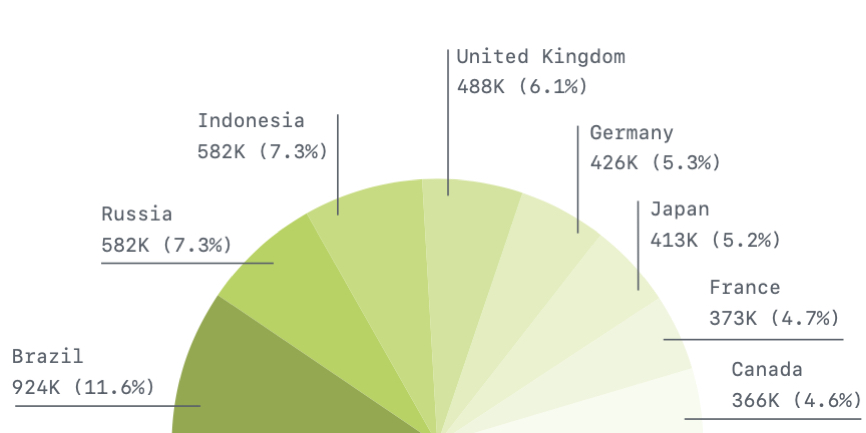
What it is: Straight from the horse’s mouth: “An exploration of open source software including its impact on the world and companies, plus key trends shaping software development.” It draws on GitHub activity data rather than surveying a group of respondents.
What it found: Whew, 94 million developers used GitHub in 2022! That’s a whole lot more than the 2.8 million who used it in 2012. 20.5 million newbies joined this year alone. Also, there was a 20% year-over-year growth in the number of repos hosted on GitHub, and more than 3.5 billion contributions to GitHub projects over the year. Interestingly, only 20% of all GitHub repos are public, perhaps due to private repos becoming a free feature in 2019.
Nothing new has changed on the languages front. Last year, JavaScript was the most used language and that’s true this year as well. However, TypeScript seems to have slowed down in growth after skyrocketing in popularity last year. I suspected it would jump up a few spots this year, but it’s still in fourth behind Python and Java (which is far from dead).
GitHub Copilot’s impact on developer productivity and happiness

What it is: GitHub published a report on GitHub Copilot, its AI-flavored development assistant. Is Copilot making developers’ lives easier? Is it making them more productive? Those are the sorts of things covered in this report, drawing on survey results they published in an academic paper, and external research on development productivity. There’s good qualitiative feedback in there as well.
What it found: Can you guess it? Yep, those who use Copilot feel more productive than those who do not use it. And those who use it complete tasks ~55% faster than those who do not use it for the same tasks. What it sounds like, if I’m reading this right, is that Copilot users enjoy the way it handles all the “fiddly” things for them — like auto-closing brackets.
Dave’s thoughts on Copilot seem to jive with the report’s description of Copilot being like a pair programmer with a calculator attached. Maybe not the best pair programmer in the world, but one in which your mental model shifts from writing code to checking code.
The Software House State of Frontend 2022
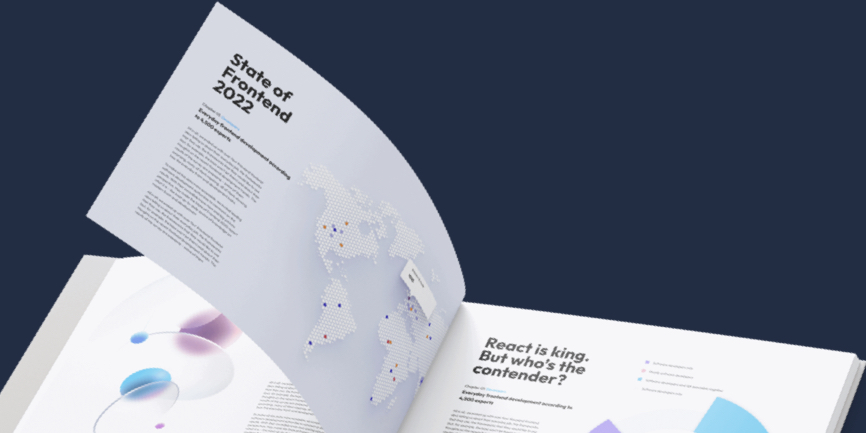
What it is: A survey of 3,703 developers to “see the real day-to-day perspective from [front-end] professionals of all levels and backgrounds.” What makes this survey a little different is that it also polls 19 invited experts in the field, including — you guessed it — Chris Coyier weighing in on styling tools.
What it found: You know, there’s really more findings here than a mere summary can do justice. This might be the most comprehensive set of results of the whole bunch. There’s so much to grok, from frameworks, hosting, and SSG to browser technologies, code management, and testing. And that only scratches the surface. If nothing else, it’s worth clicking through to the full report just for the analysis from the invited experts.
Sparkbox 2022 Design Systems Survey
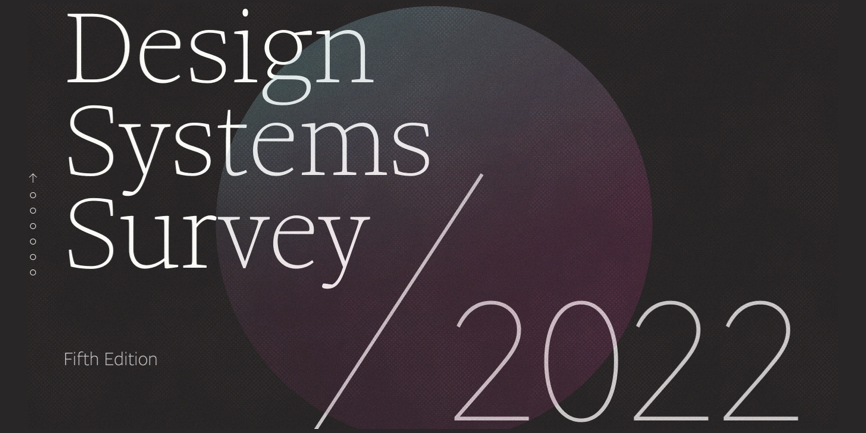
What it is: A survey all about design systems that’s focused on adoption, contributions, design, technical debt, and how design systems are used. This year’s results reflect the answers of 219 submissions, down from last year’s 376.
What it found: Last year, the survey found that 40% of folks consider their design systems “successful” or “very” successful. Those figures are less obvious in this year’s survey. But more interesting is what’s included in their systems. Sure, typography, colors, components, and layouts are common to most of them. But it’s the lack of things like developer-ready code (65%), accessibility guidelines (57%), and content guidelines (45%) that might be influencing the finding that only 65% of people who identify as design system subscribers say they get what they need from their systems.
UXTools.co 2022 Design Tools Survey

What it is: The sixth edition of a survey that looks at the tooling people use for things like prototyping, UI design, design systems, and user testing. This year received 4,260 submissions.
What it found: First off, we’re dealing with a bunch of designers. 82% have “designer” somewhere in their job title, compared to a mere 6% who call themselves developers. That’s reasonable for a survey that’s all about UX tooling.
So, what tools are they using? Figma by a loooooong mile for UI design. 73% report Figma as their design software of choice, followed by a neck-and-neck race between Adode XD (6%) and Sketch (5%) for a distant second. Figma also leads the pack when it comes to basic UI protoyping and managing design systems.
Do you want to know the top tool for storing, tagging, and organizing research? It’s Notion! Funny how it comes up as both an emerging CMS and a research repository in different surveys.
2023 HackerRank Developer Skills Report
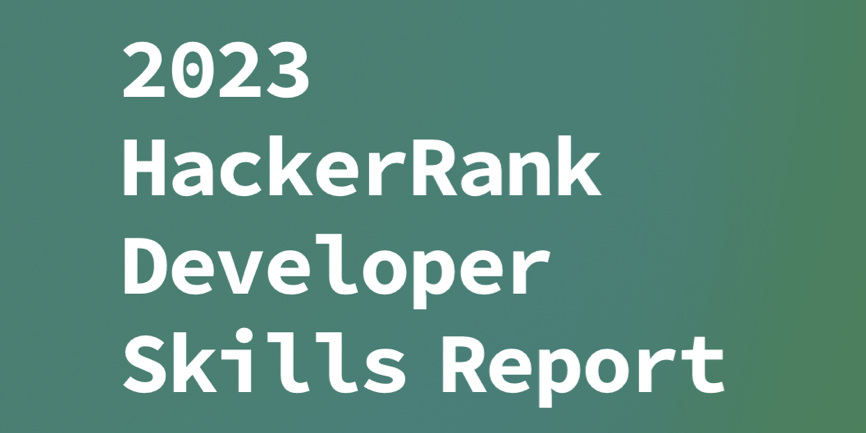
What it is: A survey of HankerRank community members and their development skills, such as the languages they use and their experience with them.
What it found: I don’t know! I tried several times to download the report, but got nothing more than a spinning wheel. The link to the report takes you to a sneak peek with some basic findings, like the top five used languages — Java, Python, SQL, C++, and JavaScript, in that order — make up the overwhelming majority of all reported languages. There’s also findings on the fastest growing languages, which is where TypeScript (182%), PHP (172%), and Go (125%) are dominant. Swift usage fell hard at -42% which is interesting considering the findings in the next survey we’re going to look at.
Tower Git Mac Dev Survey 2022
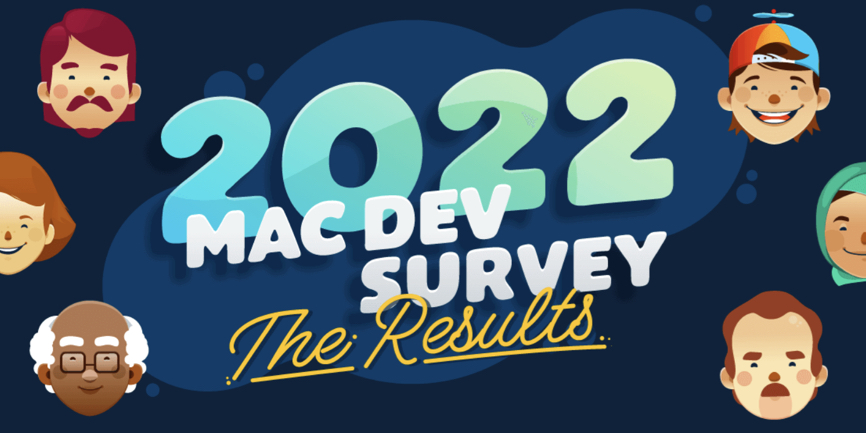
What it is: A survey of 2,506 developers (down from last year’s 4,072) working on the MacOS platform with the goal of understanding the profile of this specific developer niche.
What it found: Last year’s takeaway was the age of this crowd trending younger, suggesting a growth in Mac-related development. And lots of them really wanted to learn Swift. What changed? Not a whole lot! Most developer are still in the 30-44 age range (40.9%) even though that’s significantly down from 54.8% last year. And the largest age group (19.5%) is in the 35-39 range. They still work with JavaScript most (52.7%) and still want to learn Swift the most (28.2%).
Developer Nation 2022 Q1 Pulse Report
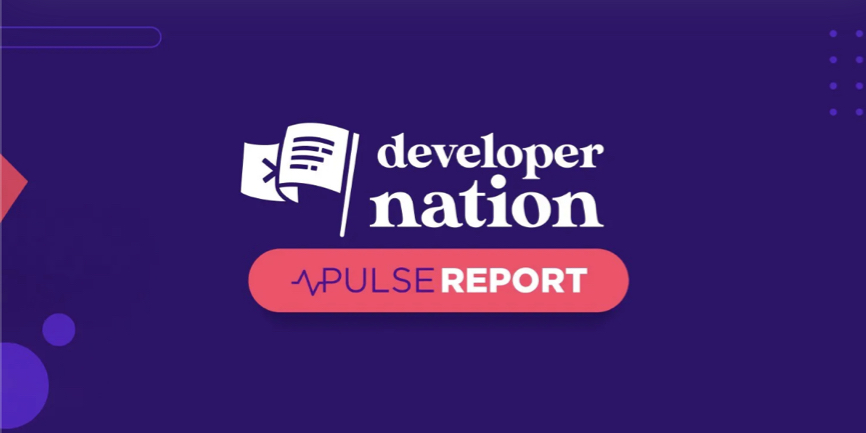
What it is: A report is based on a global online developer survey designed, produced, and carried out by SlashData over ten weeks between December 2021 and February 2022 to measure developer trends, technology preferences, and emerging technology patterns.
What it found: I like that this report breaks down its demographics by gender. And while the result is unsurprising — there are way more men (81%) than women (17%) — it’s still a confirmation of the almost tangible dismal gender equality in the development industry as a whole.
Wanna know this survey’s top five programming languages? It’s exactly the same as HackerRank’s top five, with one exception: C# knocked JavaScript off the list. I also find it interesting that the top emerging area of interest for this group is artificial intelligence software, beating out augmented reality, robotics, cryptocurrency, and blockchain. Maybe some of these folks are the ones influencing GitHub’s Copilot research findings?
Postman 2022 State of the API Report

What it is: A survey of more than 37,000 developers (up from 28,000 last year and 13,500 in 2020!) that measures who is developing with APIs, what sort of work they’re doing with them, and how APIs are evolving.
What it found: Last year, I reported this:
67% of developers say they’ve adopted an API-first philosophy and 94% say they believe their companies will either invest more or the same in APIs in the next year. We’ll see when those results roll in next year!
The same data point this year says that number is down to 89% — and with a larger pool of survey participants. That said, Postman API requests skyrocketed from 855 million last year to 1.13 billion this year. Wow. I’d say last year’s prediction that more companies would investment in API usage this year is spot on.
The most popular APIs? That group includes known entities like Salesforce and Twitter, but welcomes Notion to the list — it’s really been a banner year for Notion according to many of the surveys in this roundup.
CodeinWP WordPress Hosting Survey 2022
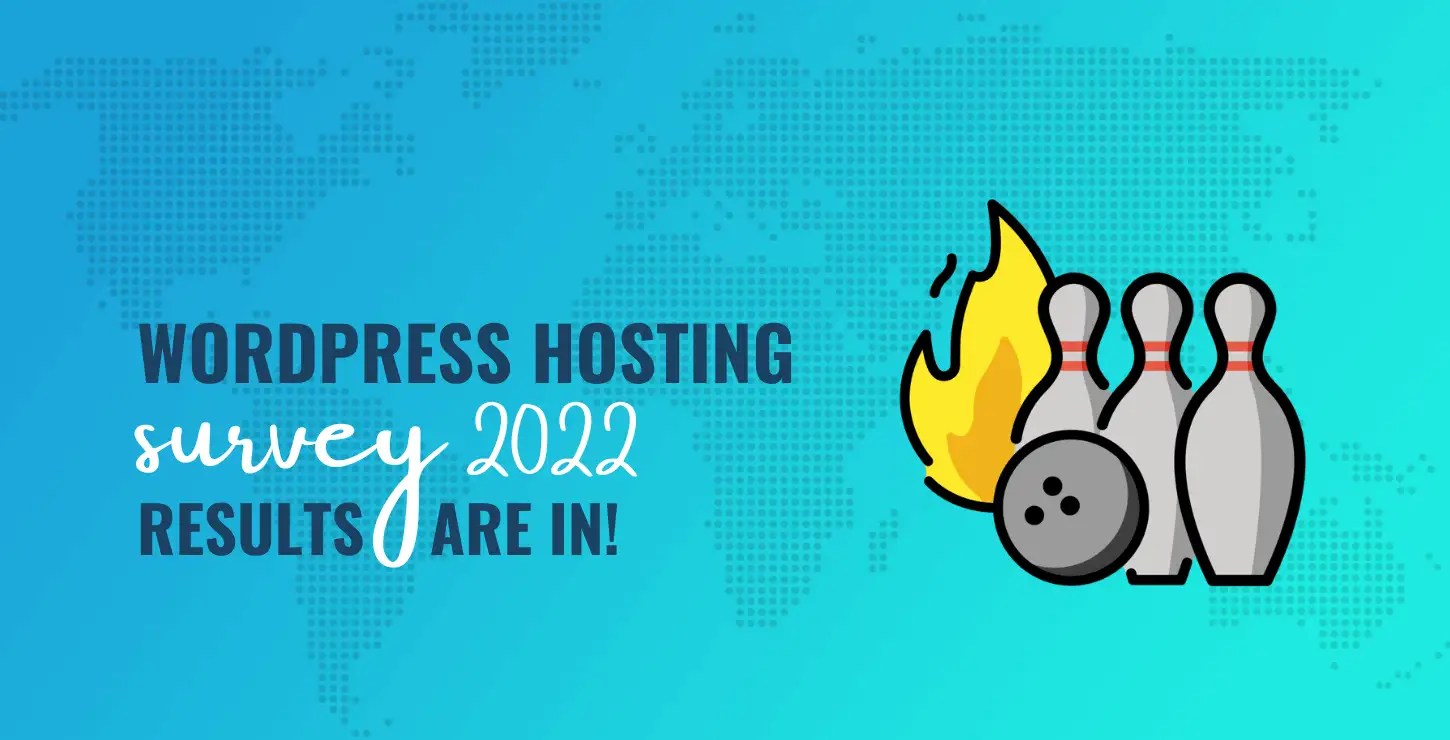
What it is: A survey all about WordPress hosting that polls people who read the CodeinWP blog. They received 3,400 submissions this year. They’ve apparently been doing this survey since 2016 but it’s slipped under my radar until this year.
What it found: GoDaddy is the hosting provider of choice for this group, which was the story in 2019 and 2020 as well. But it only represents 11.8% of survey participants. The market is pretty crowded with Bluehost (8.4%), Hostinger (4.8%), and HostGator (3.4%) trailing behind. LOLzzz for GoDaddy also falling dead last in hosting satisfaction with 6.3/10 satisfaction rate. WP Engine got the top rating score (9.2/10) but that’s based on just 21 survey participants, compared to GoDaddy’s 377. Plus, the survey notes that many specified “WordPress” as their host… which could either mean they use WordPress.com or are simply confused between WordPress.com and a self-hosted WordPress site. ????♂️
WordPress LMS Websites: A Data Study

What it is: Let’s look at another WordPress-centric survey while we’re at it. This one is run by a group called Sell Courses Online, which is a dead giveaway that it’s focused on learning management systems (LMS) in the WordPress ecosystem.
What it found: I admit I’m super interested in this report because I teach web development in higher education and have played with a bunch of LMSs. WordPress is ripe software for for it, too, with quite a few plugin options. It’s super affordable as well, with most folks (41.3%) spending less than $50/month on their tech stack, and 76.2% spending less than $250. Most of those low-spend sites rely on a freemium-based LMS model.
And what’s included in that stack? 65.3% rely on WooCommerce for selling courses, 57.5% use Elementor as a page builder, 19% use the Astra theme (while 66% specify others), and 13.5% use Paid Memberships Pro for user accounts.
Hey, what about the actual LMS functionality? LearnDash is is the most popular LMS plugin with 34%, followed by LearnPress (31%) and Tutor LMS (19%). I’ve worked with LearnDash and love it, especially the number of add-ons to extend the functionality with more features as needed.
UN E-Government Survey 2022
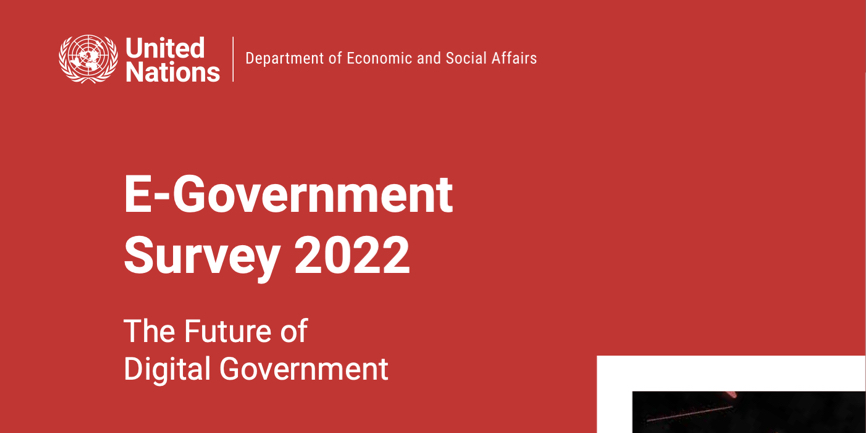
What it is: It’s funny, but I have a degree in Economics that I clearly haven’t used in my professional career, and there’s a bunch of stuff in here that’s way over my head. What it boils down to, if I’m understanding correctly, is that this report measures the online development of governments across United Nations member states, drawing on a composite of three different indices.
Has the United States progressed in its digital infrastructure and strategies? That’s the sort of thing this report looks at, taking in factors like what online services a country provides, how it approaches cybersecurity, efforts to increase digital proficiencies, and even how technology has been used to address crises like the COVID-19 pandemic.
The first survey was published in 2001. This 2022 survey is the eleventh edition of this biennial publication.
What it found: Honestly, you’d do better reading the press release (PDF) than relying on my uneducated insights. But at a super high level, Denmark, Finland and the Republic of Korea lead the 2022 digital government rankings, “scoring the highest when it comes to the scope and quality of online services, status of telecommunication infrastructure and existing human capacity.”
LinkedIn 2022 Workplace Learning Report

What it is: The name of the report sorta says it all — LinkedIn looks at the state of the professional learning landscape in workplaces. This is the sixth edition, surveying 1,444 learning and development professionals (L&D), and 610 learners in November 2021.
A lot of this year’s report is written around the COVID-19 pandemic’s impact on learning in the workplace, like how learning has been affected by layoffs and remote work arrangements.
What it found: Learning continues despite The Great Reshuffle/Great Resignation or whatever you want to call the relatively new trend of quitting jobs and changing careers. For example, 46% of L&D professionals say there is a wider technological skill gap on their teams, and 49% say execs are concerned that employees do not have the right skills to meet business strategies. That suggests the post-pandemic technological landscape has created higher expectations as far as employees having relevant technical skills, particularly when it comes to what’s needed for successful remote work.
That, in turn, has led to a rise in demand for workplace learning programs and profressionals. L&D professionals are in higher demand and make more money than they did before. And only 8% expect their L&D budget to decrease in the coming year.
What sorts of learning programs have top priority? Diversity, equity, and inclusion (45%), leading through change programs (42%), in-person training (41%, up from 25%!), upskilling and reskilling (41%), and digital fluency (30%). A lot of soft skills in there!
UpWork: The Great Work Teardown

What it is: While we’re on the topic of changing workplace environments, let’s look at this one that investigates the workplace trends that are changing perspectives on when, where, and how people work — and how businesses are adapting to those changing perspectives.
What it found: The stats are super interesting, but I couldn’t find any information on the methodology it used to get them. Like 50% of businesses have reported higher turnover compared to pre-pandemic times, 38% plan to spend more on independent remote freelancers, and 37% are fully remote today with 28% expecting to go fully remote in a year. What’s going to happen to all those empty office buildings?!
On the employee side of things, 61% say they are more productive when they work remote. 45% of business also report an increase in productivity as a result of remote work and a whopping 63% reduction in unscheduled work absences.
There are other interesting stats on how other things are changing, like traditional work hours, where people choose to work, and the perception of workplace culture.
UpWork 2022 Labor Market Trends and Insights
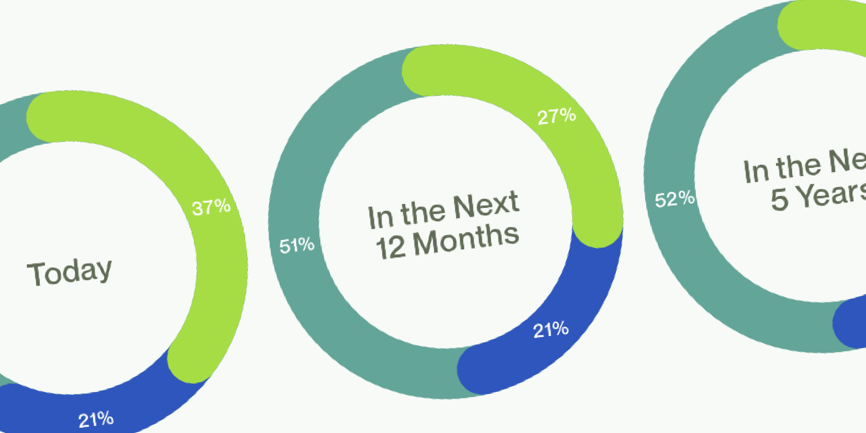
What it is: Another one from UpWork! This time it’s looking at the overall labor market. And there’s a documented methodology this time, saying that numbers are based on survey results of 1,000 hiring professionals from a third-party as well as findings from a separate study from a separate firm that surveyed 6,000 working professionals.
What it found: Well, UpWork’s “Great Work Teardown” report found that there’s big growth in business relying on remote freelancers. This report confirms that 78% of hiring pros saying they’ve used remote freelancers and 52% saying they are using more of them today than they have in previous years.
Get this: 60% of managers at mid-sized companies report higher turnover since pre-pandemic levels, while only 25% of small companies report the same. And roughly 45% of all hiring managers say they plan to combat turnover by offering more learning programs, confirming LinkedIn’s workplace learning report.
And, hey, if you’re looking for a higher salary or more perks, this might be the time to to strike because around 50% of managers are considering higher salaries and bigger benefit packages to retain staff.
Reblaze 2022 State of Web Security Survey
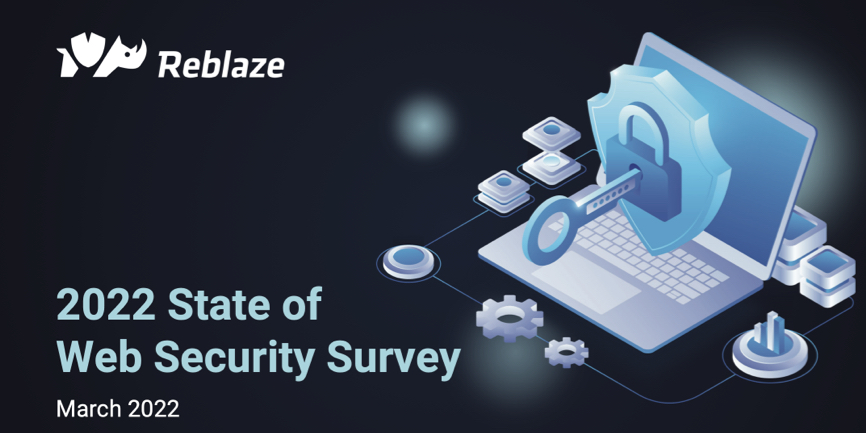
What it is: This survey is new to the collection! It asked 300 web security pros what they consider to be their biggest online threats and how they plan on defending against them.
What it found: The most common attacks were the home for CSS-Tricks, is sandwiched between Oracle (7%) and IBM (3%) as an interesting aside.)
API security is tops as far as priority goes. With Postman’s State of the API report showing a year-over-year increase in API requests that goes from 855 million last year to 1.13 billion this year, it’s clear why that is.
(Linking directly to the PDF to save you the registration effort.)
Trend Micro 2022 Midyear Cybersecurity Report

What it is: Let’s keep talking cybersecurity. This report polls 6,297 IT security decision-makers from 29 countries about their thoughts on the cybersecurity risks they face.
What it found: A good chunk of folks (62%) say they have blindspots in their defense strategies and 43% belive that that their exposure to threats is out of control. That’s in line with the Reblaze survey above that reported 50% of folks saying they have no certainty as far as how many bots account for overall traffic. This report notes that 37% of participants cite cloud assets as the area they have the least insight into.
The report gets into a bunch of specific attacks that I had no idea were even a thing. It’s unnerving how attacks seem to get smarter and smarter each year while the businesses continue to increase their exposure to them. This report provides a lot of excellent detail on those threats, including a section devoted to cybersecurity efforts in the Russia-Ukraine conflict.
1Password: The realities of parenting and growing up online

What it is: Let’s heap more on the cybersecurity research pile will this report from the folks behind the 1Password app. This one hits pretty close to home for me because it looks at parenting in the always-online era, which is something pinned to the back of my mind since I have two young daughters who love their screens.
1Password teamed up with Malwarebytes to produce this report, which is based on a survey of 1,000 parents and 1,000 children that were born between 1997-2009 that was prepared by another firm, Method Research. The data is fresh having been collected in August this year.
What it found: A bunch of stats I wish I could unsee. Like 74% of parents think they’re keeping their kids safe, while only 51% agree. And 74% of kids have ways to workaround being monitored by their parents (where 9% claim to have a secret device their parents don’t know about). Cyberbullying is the top concern for both parents (73%) and kids (66%).
Parents also need to be more responsible. 73% of kids wish their parents would ask for permission to post photos of them while only 34% of parents actually ask (and — eek! — 39% don’t believe they need to ask permission). The importance here is that 11% of kids say they’ve been stalked or bullied because of something posted by their parents, and 12% report being harmed in some way, whether its hacked accounts, stolen identities, or tarnished credit cores.
The Eclipse Foundation 2022 IoT & Edge Developer Survey

What it is: A survey of 910 global developers, committers, architects, and decision-makers that took place between April and June 2022 to spot trends in the Internet of Things (IoT) space. You know, like that smart fridge in your kitchen and voice-controlled curtains that shade your living room. That and more serious stuff like trends in artificial intelligence and edge computing.
What it found: Last year, I called Microsoft’s IoT findings “mostly nice trivia for cocktail chatter.” This report is a lot more granular and is probably most helpful for those working in the space, as there’s so much information on the stacks that developers use and overarching concerns about them. I mean, I don’t particularly care that “64-bit ARM architectures are gaining ground with gateway and edge node suppliers.” But I bet that’s super important to some of you reading this.
(Linking directly to the PDF to save you the registration effort.)
CampaignMonitor Ultimate Email Marketing Benchmarks for 2022
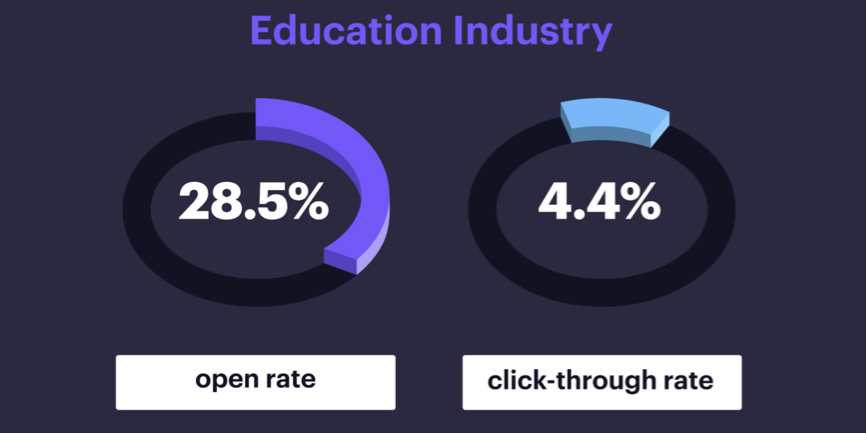
What it is: A study of benchmarks related to email marketing based on 100 billion emails delivered on CampaignMonitor’s platform in 2021. It looks at things like open and click rates, and breaks them down by industry to help folks get the most out of their email marketing campaigns and know how to gauge success.
What it found: It’s probably better for you to see their table of results by industry rather than having me regurgitate the results of all 19 industries they identified. But on a global level, a 21.5% open rate is quite average across all industries, as is a 2.3% click-through rate. It appears Monday produces the highest open rate (22% on average) while Sunday produces the lowest (20.3%), so not a whole lot of variance there. Same deal with click-through rates, where Tuesday is highest (2.4%) and Saturday and Sunday share the lowest rate (2.1%). Again, not a lot of difference but it could be helpful knowing this stuff if you’re trying to milk every last drop out of a campaign.
Wrapping up
We looked at 27 different reports on front-end and front-end-adjacent topics! That’s more than the 25 we covered last year and the fitting number of 20 we looked at in 2020.
If there’s one BIG takeaway from all these takeaways, it’s to remember this is all in good fun. Many of the studies lack the scientific methods we’d want to base decisions on, and the sample sizes are far too small to accurately reflect reality. But they sure are interesting, right?!
Some reports are annual, some are one-off, and others seemingly happen whenever the heck they wanna do it. So, if I missed any from previous years, it’s probably because they aren’t annual or just aren’t available as I’m writing this. As always, let me know if there’s a report I missed and I’ll try to work it in.
There are more reports on the way! In fact, you can take the 2022 State of JavaScript survey and the 2022 WordPress Annual Survey as this is being written. Have at ’em!

